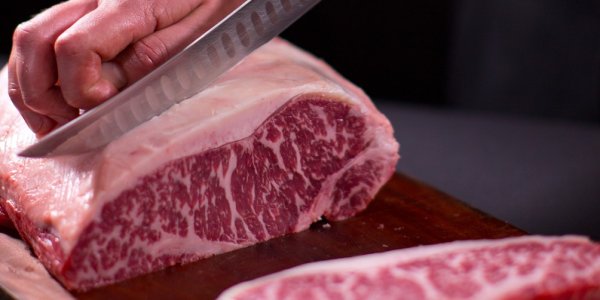Vietnam a ‘perfect partner’ to help bridge beef and grain trade gap

A report points to ‘significant opportunities’ for Australian exporters to expand trade ties with Vietnam, including for beef and grain, as soaring tensions with nearby China encourage diversification toward other markets.
The report, titled “A path to Vietnam”, was prepared by the Asia Society and RMIT University and analyses opportunities and barriers for greater Australian trade with Vietnam in future.
It identifies Vietnam as a “standout option” for Australian businesses to consider as markets for a range goods, describing the South East Asian nation as a “a perfect economic partner for Australia”, as both nations have complimentary economic systems and seek diversification of their trading partnerships, amidst weakening global economy and geopolitical tensions.
Vietnam, with a population of 96 million people, has had uninterrupted economic growth since 1989, generally welcomes Australian business and Brand Australia is well regarded in the country, the report notes.
The Governments of both countries have set an ambitious joint target to become each others’ top ten trading partners and to double two-way investment.
“Vietnam’s rapid growth over three decades, consistent economic reform, swift digital uptake and competent COVID-19 management have put the country in good shape,” the report states.
In 2019, two-way trade between the two countries reached nearly $15.5 billion according to the Department of Foreign Affairs and Trade.
The report suggests significant opportunities to increase trade exist for beef, live cattle, wheat, barley and cotton, along with horticulture and processed foods.
Vietnam is Australia’s second largest market for live cattle, taking 32 percent of all exported Australian cattle in 2019-20.
Vietnam has imported 277,000 Australian cattle in the 11 months from January to November 2020, surpassing the 267,663 shipped in the entire 2019 calendar year. The most cattle Australia has exported to Vietnam in a single year was 360,000 head in 2015.
Sales of beef increased by 290 percent over the five years to 2019 according to the report. MLA’s most recent South East Market snapshot shows that boxed beef exports to Vietnam in 2019-20 totalled 5,237 tonnes, which was down on the five-year average of 6,683 tonnes.
However the report suggests significant potential exists for Australia to grow exports of key products including beef to Vietnam, based on consumption trends in the market, Australia’s comparative advantage as a supplier and FTA and other market access advantages.
Supporting this was an increasingly modern agribusiness and processed food sector in Vietnam, and the potential for Australian business to introduce inputs, expertise, knowledge, or processes that facilitate efficiency.
The Export Potential Map, a major data source hosted by the International Trade Centre (ITC – a joint agency of the WTO and United Nations) identifies Australia’s export products that have the greatest growth opportunities in the Vietnamese market.
Examples of Australian firms operating in the agricultural sector included SunRice and Australia’s largest grain-exporting company CBH, which first invested in Vietnam in 2005 to underwrite grain exports by launching a joint venture (Interflour) with Indonesian food conglomerate, Salim Group in grain-processing plants. Interflour can choose to purchase grain from around the world and sources 60-70pc of its wheat from Australia. In 2017, the company also opened a US$70 million malting plant in Cai Mep, near HCMC, to supply Vietnam’s drinks industry and directly connect Western Australia’s barley growers to the fastestgrowing beer market in Asia.
In 2008, a group of Australian investors purchased VN Futuremilk Co. Ltd which operates a 1,500- cow dairy located in Son Duong, Tuyen Quang Province, about 100km northeast of Ha Noi. The new company was modernised adopting leading technology and practices and is a prime dairy producer in the region.
Market access benefits
The report notes that Australia’s exports benefit from Vietnam’s membership of both AANZFTA and CPTPP. Australian exporters receive at least equivalent access to Vietnam as key competitors for -beef and live cattle, wheat and barley, cotton, horticulture products, semi-processed metals, and processed foods.
Australia also has FTA market access advantages over key competitors in beef, wheat and selected horticultural products.
“Vietnam’s agricultural sector is relatively open, with relatively low levels of government support and protection for agriculture when compared with other ASEAN and OECD economies,” it says.
Additional Vietnam had in place very few harmful trade policies.
“Even during 2020 – when many economies rushed through protectionist measures to shield local sectors from the global economic slowdown – Viet Nam has not disadvantaged overseas agricultural suppliers.”
It notes that operating in a foreign market requires an awareness of local challenges, regulatory hurdles, cultural differences and ways to address them, and that “Vietnam is no different”.
“But these can be navigated with the right approach and resources”
The report said that Australia and Vietnam both seek to reduce their economic over-reliance on China as a dominant trading partner and were both committed to supporting the continuing presence and engagement of the US in the region as a balancing factor to an increasingly assertive China.
Read also
Wheat in Southern Brazil Impacted by Dry Weather and Frosts
Oilseed Industry. Leaders and Strategies in the Times of a Great Change
Black Sea & Danube Region: Oilseed and Vegoil Markets Within Ongoing Transfor...
Serbia. The drought will cause extremely high losses for farmers this year
2023/24 Safrinha Corn in Brazil 91% Harvested
Write to us
Our manager will contact you soon



